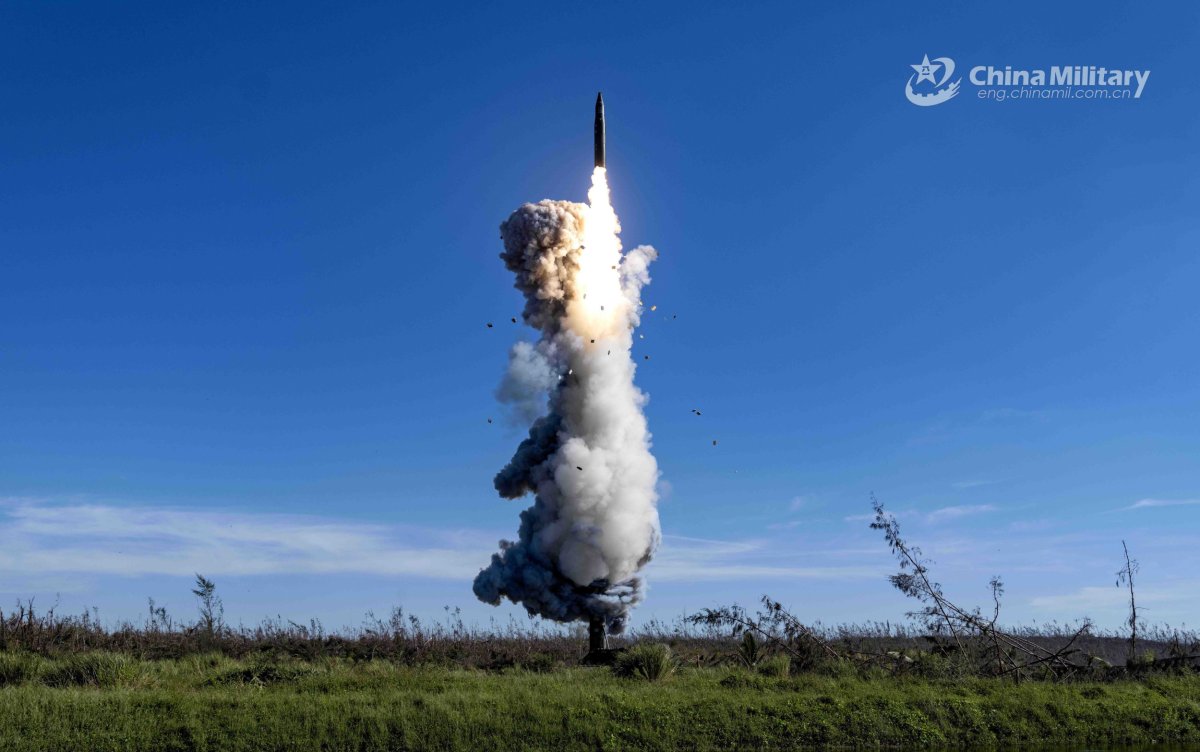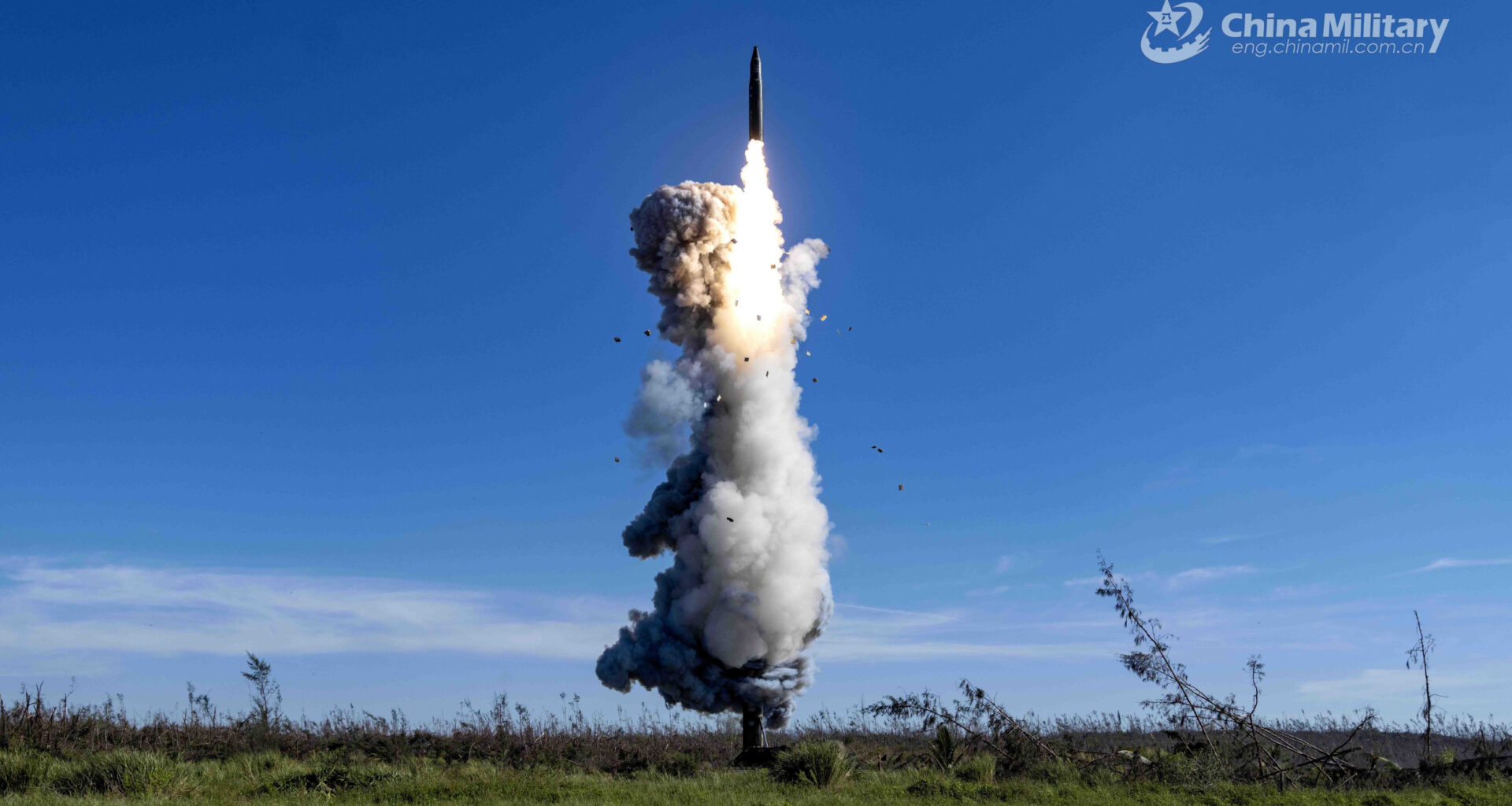In another move coinciding with the 98th anniversary of the founding of its armed forces, China has released footage of last year’s high-profile test launch of a nuclear-capable missile.
As the military celebrated the anniversary of its founding on Friday, Chinese state media also disclosed details about a submarine equipped with nuclear missiles and Beijing officially unveiled its fourth Type 075 amphibious assault ship.
Newsweek has reached out to the Chinese Defense Ministry for further comment via email.
Why It Matters
The Chinese People’s Liberation Army (PLA) launched an intercontinental ballistic missile (ICBM)—carrying a dummy warhead—into international waters in the Pacific on September 25, 2024. The long-range missile was identified by an expert as a DF-31AG.
The test—Beijing’s first since the 1980s—comes as the Chinese military undergoes accelerated nuclear development following an order from its leader, Xi Jinping. China‘s nuclear arsenal is estimated to be the third largest in the world, with at least 600 warheads.
The launch raised concerns among countries in the South Pacific, as the dummy warhead splashed down within the region’s nuclear-free zone, according to a Newsweek map.
What To Know
The Chinese military’s media wing aired footage of the ICBM test on Thursday, showing the missile—which has not been officially identified—ascending after its launch. A photograph of the launch—similar to the new footage—was officially released the day after the event.
China Central Television also published a report on the footage, citing an officer from the Rocket Force—which is responsible for the PLA’s nuclear and conventional missiles—who said the test was tied to the Rocket Force’s honor, as well as the country’s dignity and confidence.
The officer further stated that he and his fellow Rocket Force members will “always be ready” to accomplish missions as ordered.
“I have been waiting for this moment for more than 20 years,” he said, referring to the ICBM test, which Beijing described as a success.
In its most recent report on Chinese nuclear weapons, the Federation of American Scientists estimated that China possesses 462 land-based missile launchers capable of targeting the continental U.S., including those from the DF-5, DF-31 and DF-41 missile families.
Chinese military expert Song Zhongping told the Global Times that the ICBM test launch footage demonstrated China’s nuclear second-strike capabilities and its deterrence power.

The Chinese People’s Liberation Army Rocket Force launches an intercontinental ballistic missile into international waters in the Pacific Ocean on September 25, 2024.
The Chinese People’s Liberation Army Rocket Force launches an intercontinental ballistic missile into international waters in the Pacific Ocean on September 25, 2024.
China’s Defense Ministry
A second-strike capability refers to the ability to retaliate after an initial strike launched by an enemy. China has claimed that it maintains a policy of no first use of nuclear weapons, which, according to Song, means the country must be able to counterstrike if attacked first.
In addition to abiding by the no first use policy, China “commits unconditionally not to use or threaten to use nuclear weapons against non-nuclear-weapon states or nuclear-weapon-free zones,” the Chinese Embassy in Washington, D.C., previously told Newsweek.
What People Are Saying
China’s Defense Ministry announced in September 2024: “This [ICBM] test launch is a routine arrangement in our annual training plan. It is in line with international law and international practice and is not directed against any country or target.”
China’s Embassy in Washington, D.C., previously told Newsweek: “China is the only nuclear-weapon state to adopt [a policy of no first use of nuclear weapons]. China will continue to be firmly committed to safeguarding its legitimate security interests and upholding world peace and stability.”
What Happens Next
It remains to be seen whether China will conduct another ICBM test soon, as the Pentagon has assessed that the East Asian power will possess over 1,000 nuclear warheads by 2030.
